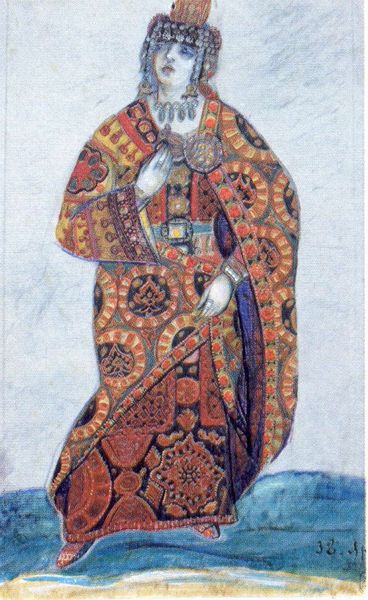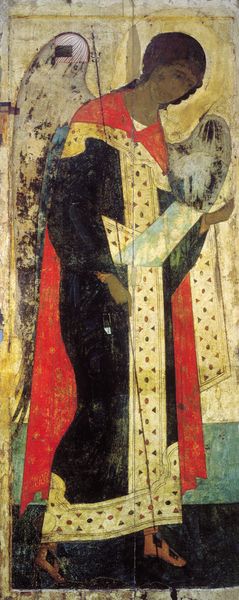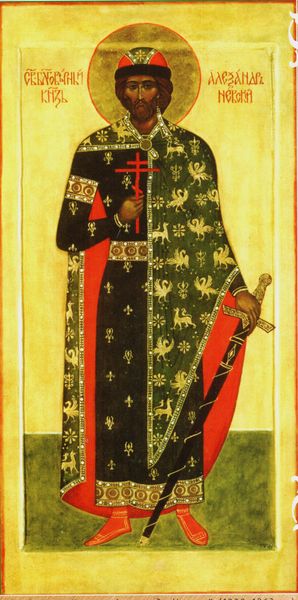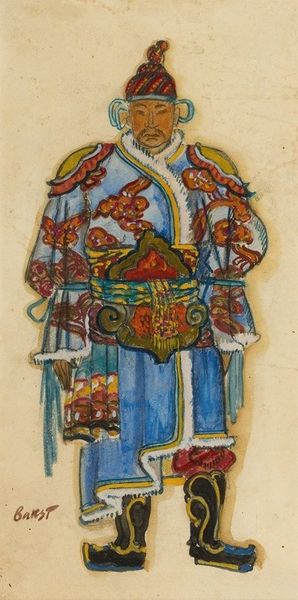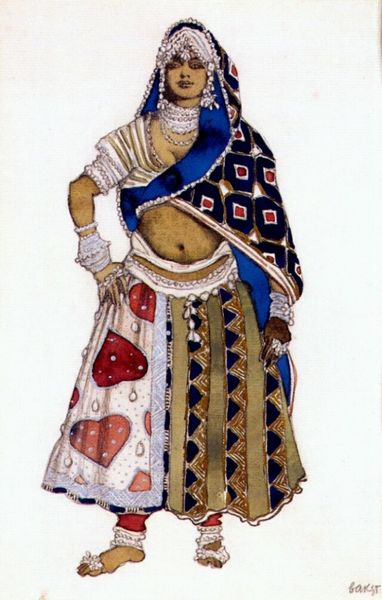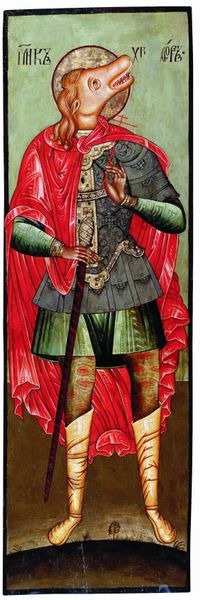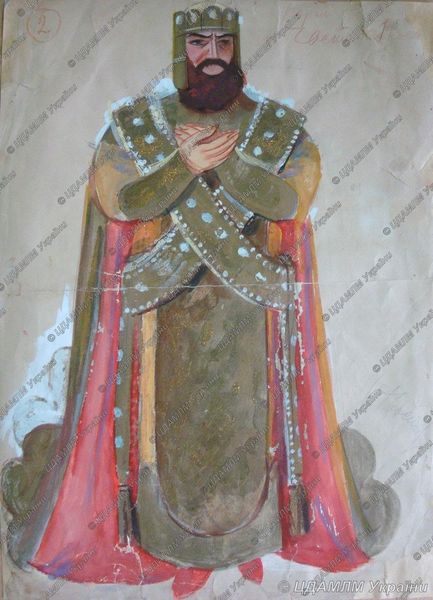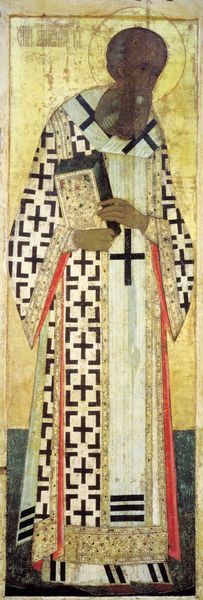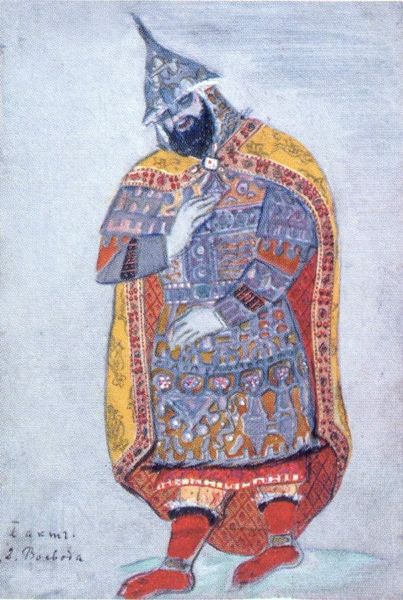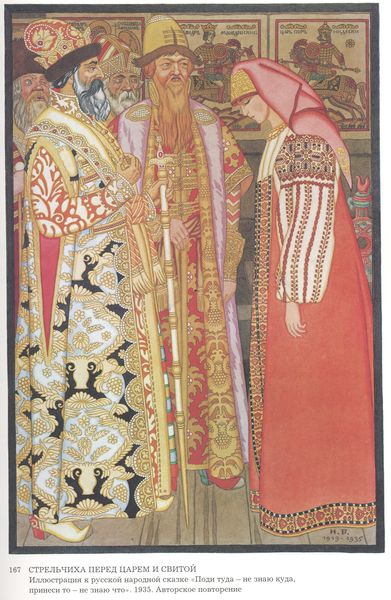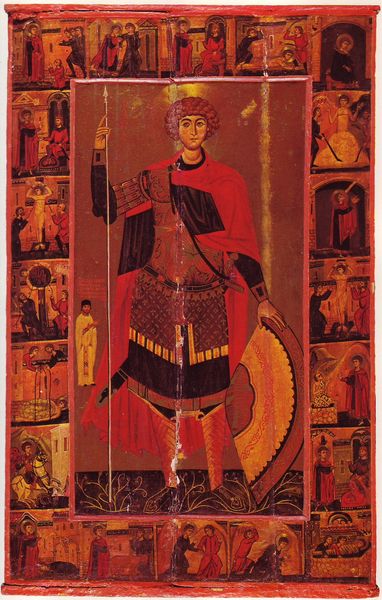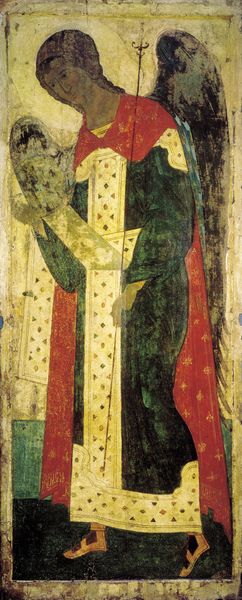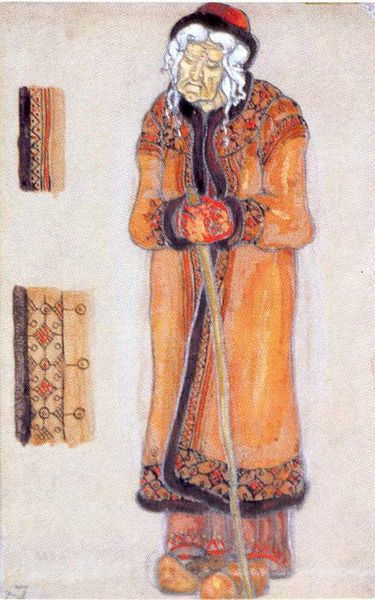
drawing, watercolor
#
drawing
#
asian-art
#
figuration
#
watercolor
#
sketch
#
naive art
#
costume
#
painting art
#
history-painting
Copyright: Public domain
Curator: This intriguing artwork, titled "Igor", is attributed to Nicholas Roerich. It’s a sketch, likely created using watercolor and drawing techniques, showcasing a richly adorned figure. Editor: It’s vibrant! The texture implied by the layered details is compelling; you immediately get a sense of opulence. Look at the pattern on that robe. Curator: Roerich was deeply involved in stage design. I suspect that we're observing a costume design, maybe for an opera or play. The cultural influences are intriguing too; it resembles some asian motifs and costume history traditions, likely related to specific performance traditions or cultural storytelling of its period. Editor: Yes, there is almost a childlike "naive art" aspect in how those repeating patterns are made. Observe the silver armor and red shield - there is a striking interplay. Notice the verticality achieved through the spear and helmet. This creates visual dominance. Curator: It reflects his interests in folklore and ancient cultures, certainly. Costume design became a crucial element in nationalistic expression across Europe from the 19th century forward. Many sought to visualize and celebrate historic roots on stage, contributing to national identities and collective memories. Editor: The drawing-like quality emphasizes linearity, especially in outlining forms; for instance, that red shield is merely suggested. Do you think this imprecision helps convey movement? Curator: I think the use of line suggests less of realism, more of a stylistic presentation suited for immediate recognition, in theater perhaps? To see Roerich's artwork situated on stage in a theater is vital. This perspective shapes one’s viewing and its significance. Editor: A fresh, invigorating, visual reminder of design innovation from Roerich. Curator: Yes, a vibrant glimpse into a theatrical past. It emphasizes the interwoven nature between art, history and performing art culture.
Comments
No comments
Be the first to comment and join the conversation on the ultimate creative platform.
